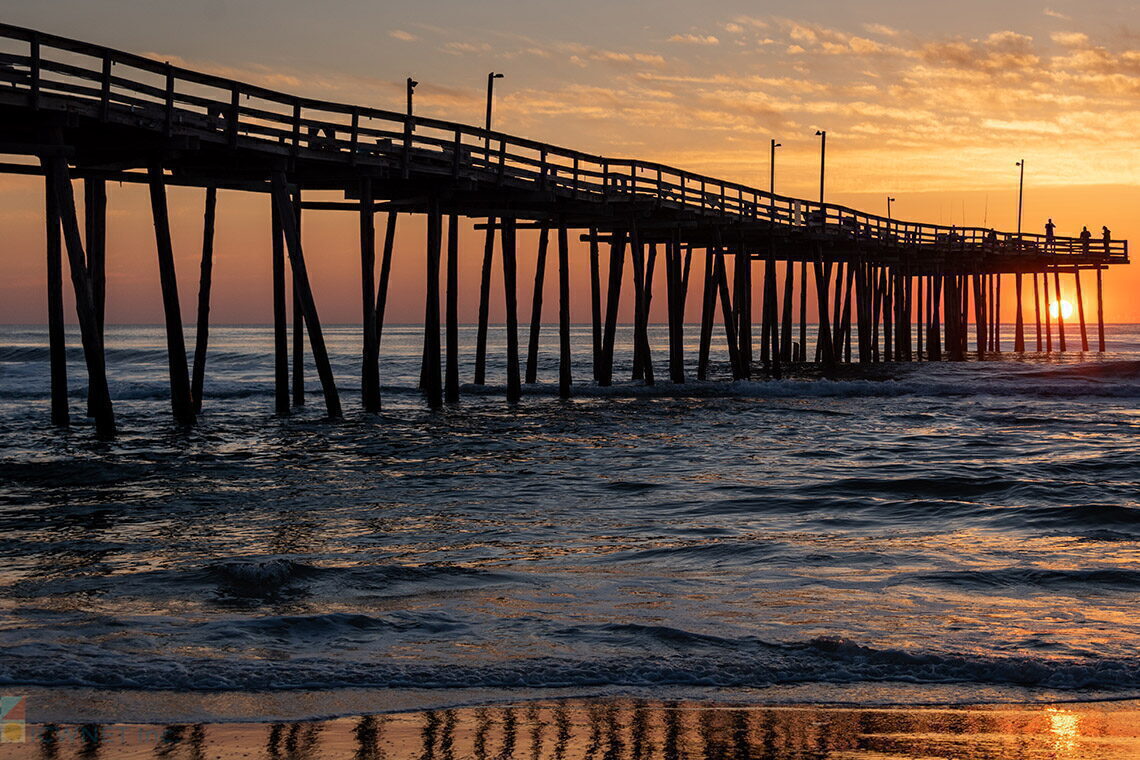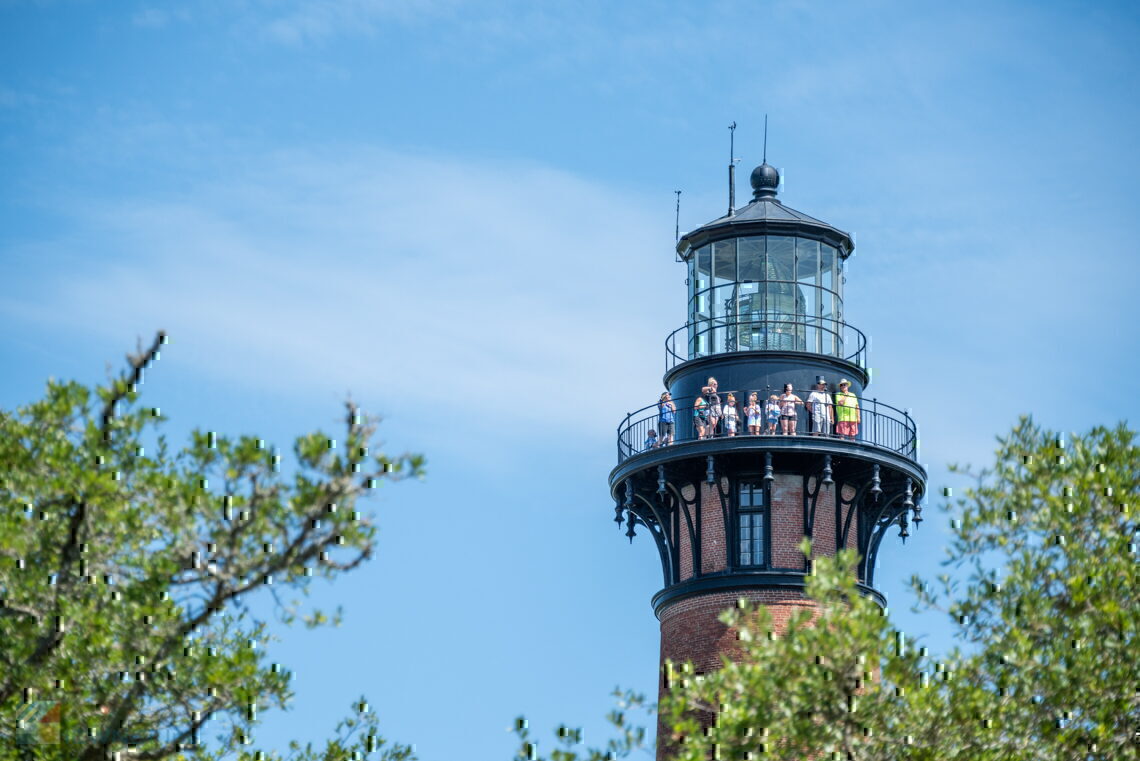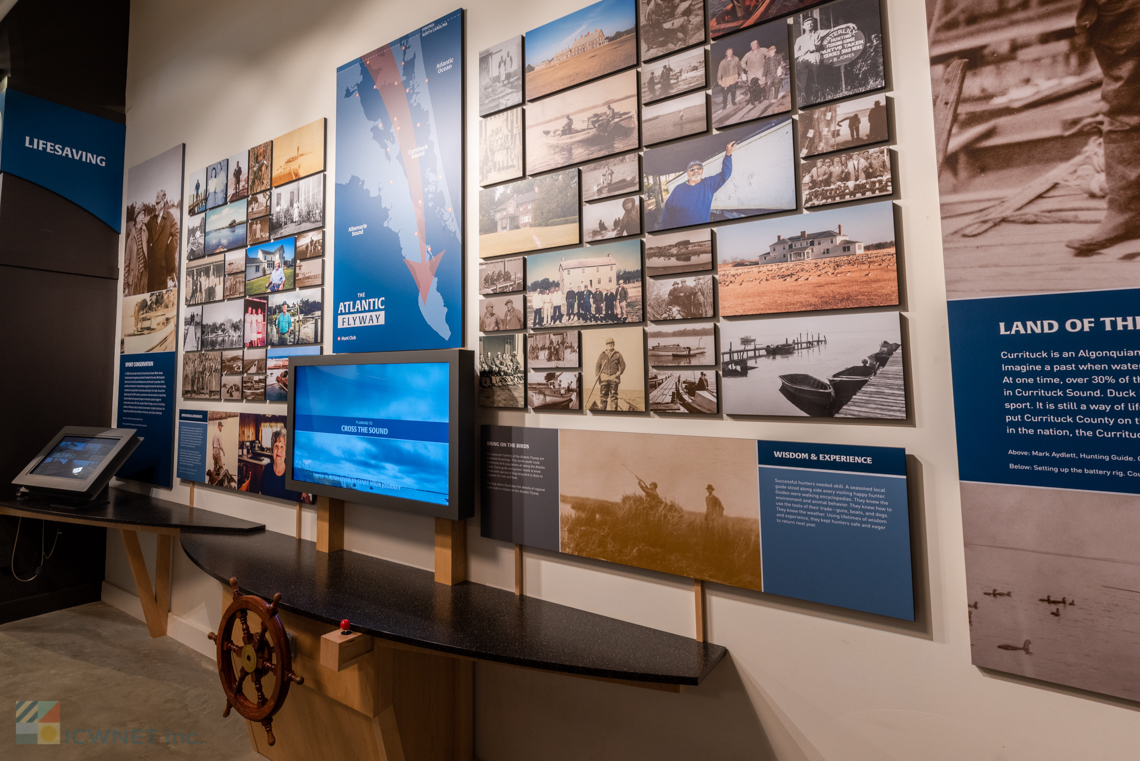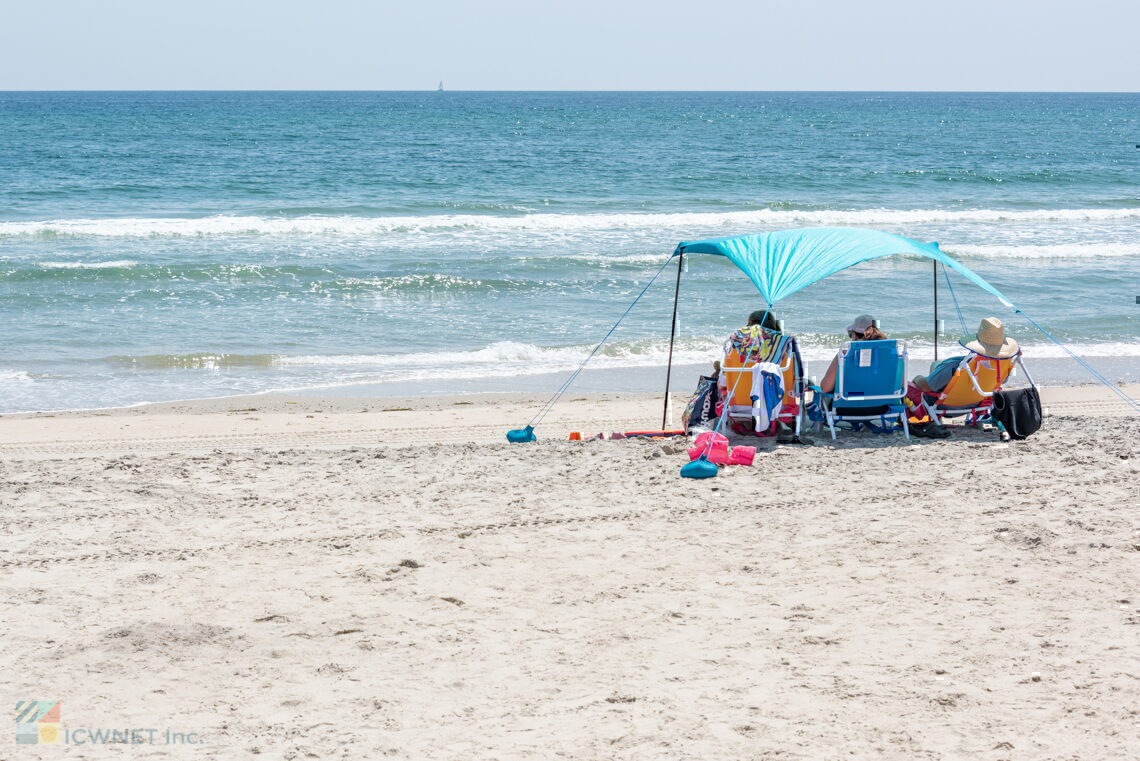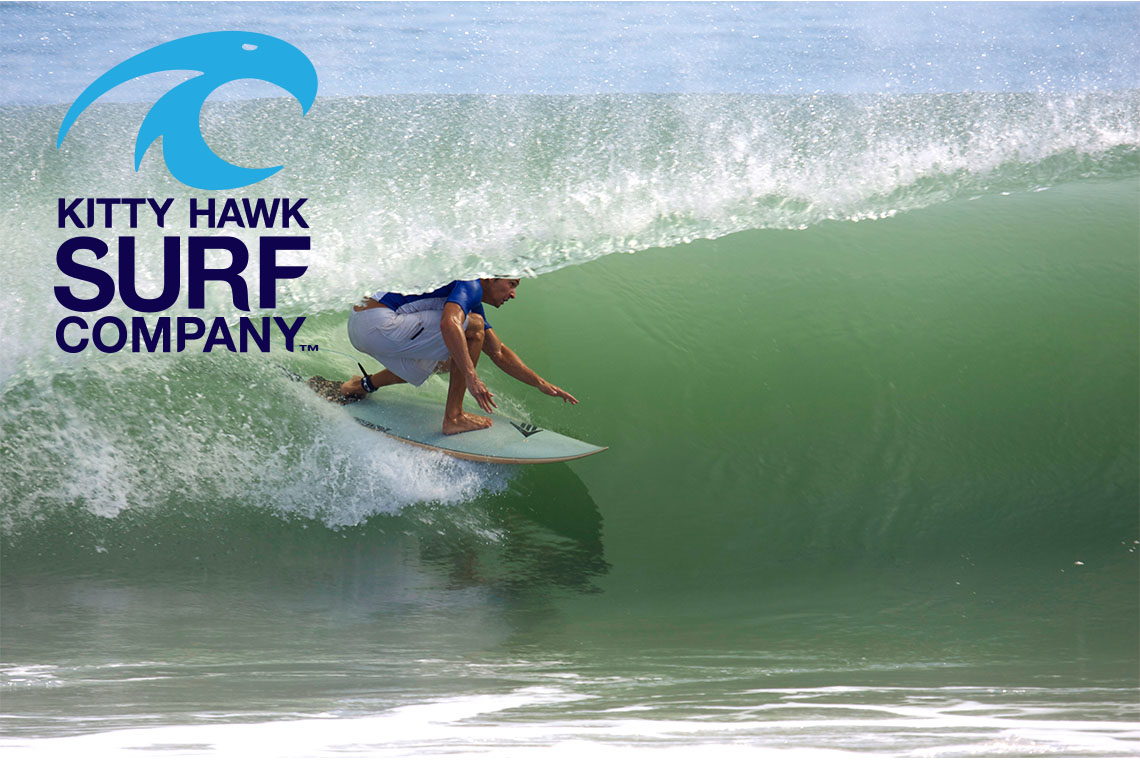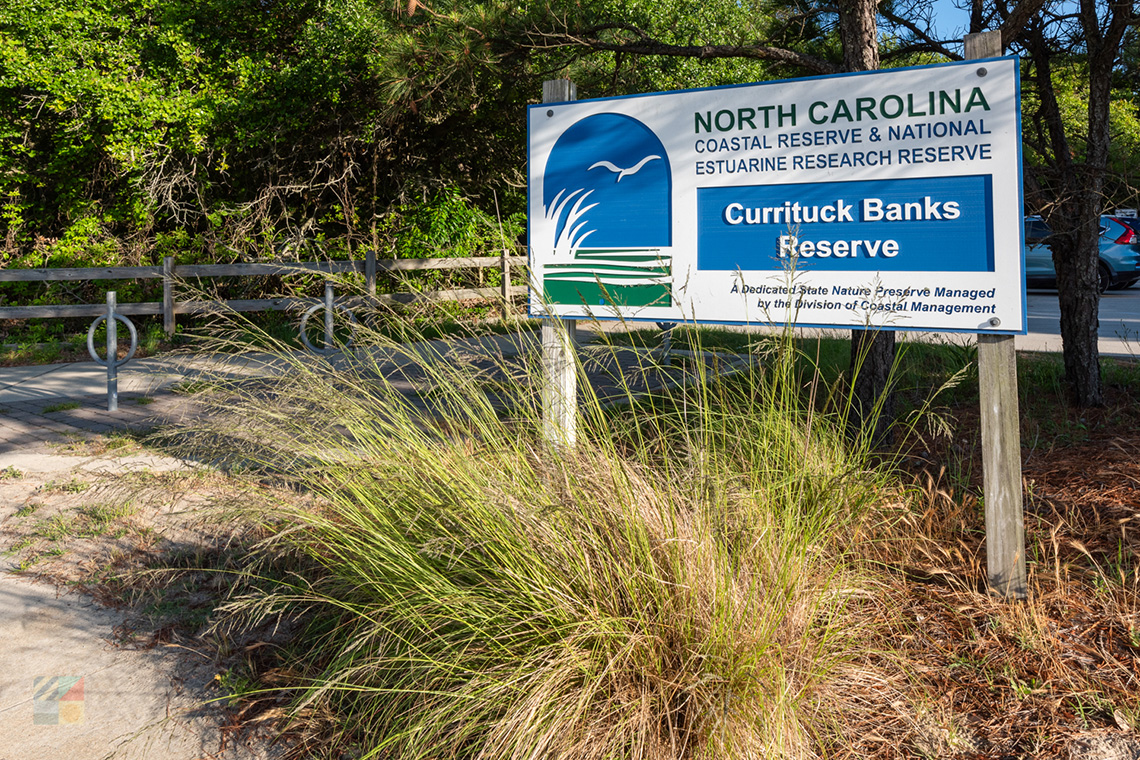Camping Guide Sections:
- Campground Listings
- Mainland Currituck
- Northern Beaches
- Hatteras Island
- Ocracoke Island
- Portsmouth Island
- Camping Tips
Vacationers with a love of the great outdoors and a sense of adventure will truly appreciate Outer Banks camping. From expansive camping complexes with community pools and tennis courts to rustic oceanfront campsites with sea oats and sand, campers can choose how much "roughing it" their Outer Banks camping experience entails.
The Outer Banks features campgrounds and campsites spanning from the Currituck County mainland to the relatively unknown Portsmouth Island south of Ocracoke. As a result, visiting campers can choose whether to stay waterfront, along the beach sand dunes, hidden in the Outer Banks' numerous maritime forests, or right in the heart of the action and attractions.
Clearly, for folks who adore getting back to nature, there's no better destination than the Outer Banks, and campers have an abundance of sites to park the RV, or set up the tent spikes, and take in the gorgeous local scenery.

Mainland Currituck and Dare County Camping
Campers who love the Outer Banks but who want to truly get out into the wild should head west, to the mainland portions of Dare and Currituck Counties. On the Dare County Mainland, small campgrounds allow campers to stay adjacent to the huge Alligator River National Wildlife Refuge. This large stretch of land, which covers the majority of mainland Dare County, encompasses miles of forest, marshes, estuaries, and as a result, is one of the best spots on the Banks to check out the local wildlife. Just watch out for those alligators.
In Currituck County, campers can stay in a handful of campgrounds and RV parks that are located throughout the mainland towns, or they can stay waterfront, adjacent to the Coinjock Bay. Two campgrounds in this area, Bell's Island Campground and Hampton Lodge Campground, are located on the tips of waterfront Currituck and offer exceptional views of both Coinjock Bay and the Currituck Sound. The campgrounds can accommodate tents, trailers or RVs, and offer varying amenities including bathrooms and showers, electric hook-ups, and even small waterfront playgrounds.
Northern and Central Outer Banks Camping
While there are no campgrounds to speak of in the northern Outer Banks communities of Corolla, Duck or Southern Shores, visitors who want to explore the northern and central Outer Banks have plenty of options in Kitty Hawk.
The area is home to a half dozen privately run campgrounds which are located throughout the town. Campers have the option of staying on the borders of the Kitty Hawk Woods Coastal Reserve at two campsites which offer electrical and water hook-ups, as well as public bathrooms. These campgrounds offer both sandy and shaded sites for more privacy, and can accommodate trailers, small RVs and tents. Check out the Preserve at Kitty Hawk Woods RV and Adventure Bound Campground for more information.
On the oceanside, a small number of RV and trailer parks can be found along the Beach Road. With fantastic beach access and reasonable rates, even in the height of summer, these parks are ideal for RV owners who want to be close to the Atlantic Ocean, but also have easy access to gift shops, restaurants, and the central Outer Banks attractions.
Just across the Roanoke Sound, Roanoke Island also has a handful of small campgrounds or RV parks, seasonally open for summer visitors. In Wanchese, nature lovers flock to the Refuge on Roanoke Island, a quiet campground bordering the sound and featuring fantastic water views and access. The campground features a long waterfront wooden boardwalk, and feels like it's in the middle of nowhere, namely because it is. On the quiet outskirts of Wanchese village, this campground borders wide marshes and small clusters of coastal woods, allowing campers ample opportunities to catch glimpses of the local wildlife, including egrets, herons, ducks, geese, and more.
Though the handful of campgrounds in the central Outer Banks may be tucked away off the main Highway 158 bypass, campers love the seclusionand can still enjoy proximity to the popular area attractions, including the Wright Brothers Memorial, the North Carolina Aquarium, and enough beach shops and restaurants to keep a camper occupied for a month.

Hatteras Island Camping
Camping fans have plenty of options on Hatteras Island. From the three National Park Service (NPS) campgrounds extending from Oregon Inlet to Frisco Village, to the large number of privately run campgrounds that have been welcoming visitors for decades, campers are always welcome to explore the Cape Hatteras National Seashore.
The northernmost campground is the NPS Oregon Inlet campground, which has a small number of sites, public restrooms, and easy access to both the gorgeous beaches bordering Oregon Inlet, as well as the Central Outer Banks attractions in Nags Head, Manteo, and Kill Devil Hills.
Located just a few miles away from the NC Aquarium, the Wright Brothers Memorial, and the Oregon Inlet Fishing Center, campers staying in this campground can easily be close to the action, while enjoying a vacation away from it all. The campground itself is located just a mile or so north of the Herbert C Bonner Bridge on NPS land, bordered by nothing but natural sand dunes and the Atlantic Ocean, so privacy and seclusion is all but a guarantee.
Like all NPS campgrounds, the Oregon Inlet location is open seasonally, generally from mid-April though the fall. Reservations are not allowed, but campers are welcome to pop-in or call ahead and see if there are vacancies. Potable water, unheated showers, grills and tables are also available on site.

Head south to the tri-villages of Rodanthe, Waves and Salvo, and you'll find an abundance of campgrounds open to visitors, both seasonal and year-round. The Cape Hatteras KOA campground, one of the area's largest, had undergone an extensive remodel after Hurricane Irene in 2011, and offers small and medium cabins, as well as site for RVs, trailers and tent campers. This campground is distinctive because of its amenities, including a community pool and snack bar, as well as a supply shop and small grill and bar.
Neighboring Camp Hatteras also offers camping sites, as well as a resort clubhouse with a heated pool, hot tub, and game room, which is open for all campers. Guests will also find Wi-Fi, laundry facilities and bath houses, as well as stocked fishing ponds, a conference center, a mini golf course, tennis court, and lovely outdoor pavilion.
The KOA and Camp Hatteras Campgrounds are not the only campgrounds in this area by a longshot, however, and a good half dozen privately run campgrounds call the Tri-villages home. Many of these campgrounds offer electric, cable and water hook-ups, as well as a scenic location adjacent to the Atlantic Ocean or Pamlico Sound. Though busy in the summertime, when reservations are strongly suggested, shoulder and off-season visitors generally have their pick of Rodanthe, Waves and Salvo campsites, and can still enjoy the temperate tri-village weather to boot.

Avon village also has a couple small privately run campgrounds, which are tucked away and virtually hidden in Avon Village, historically name "Kinnakeet." This section of town, located on the soundside of one of the village's only two traffic lights, allows campers to opportunity to feel like a local amidst a collection of brick ranch homes, a scattering of beach houses, and historic homes that date back to the 1920s and earlier.
In Buxton, visiting campers can enjoy majestic views of the Cape Hatteras Lighthouse at another of the campgrounds managed by the National Park Service.
The campground is open seasonally, generally from June through October, depending on weather conditions. Bathrooms, grills, and tables are available, and visitors to this NPS campground are literally a quick stroll away from both the Cape Hatteras Lighthouse and a number of NPS nature trails that wind through Buxton Woods. Be advised, however, that bug spray may be a necessity in summer months - the campgrounds' location in between the beach and the marshy borders of the Buxton Woods Maritime Forest can be thick with mosquitos in warm weather.

A few miles south, campers can stay at a small number of locally owned campgrounds along the Buxton Back Road, and be within easy driving distance of the beaches, the Cape Hatteras Lighthouse, and a number of markets, restaurants and attractions. The two small campgrounds in this area can accommodate RVs, trailers, and tents and feature amenities such as cable, electric and TV hook-ups, small community pools, vending machines, laundry facilities, and friendly staff and owners.
Neighboring Friscois home to two of the island's favorite campgrounds. The Frisco Campground, also managed by the National Park Service, features over 100 campsites tucked in between the sand dunes, just steps from the beach. A wide public boardwalk allows easy ocean access for campers, and public bath houses, grills, and picnic tables are available. The campsite's location extends all the way to the borders of Frisco Woods, and lies on the highest point in Frisco, with sites available along the top of the tall and ancient maritime forest sand dunes.
The Frisco Campground is open seasonally, generally from April until October, and like all Hatteras Island NPS campgrounds, camping sites are available at a first come, first serve basis.
Close by on the soundside of NC Highway 12 is the privately run Frisco Woods Campground. One of the Outer Banks' best reviewed campgrounds, this complex of shaded and private campsites borders the Pamlico Sound and offers unparalleled waterfront sunsets and easy access to kiteboarding, windsurfing and kayaking.
The campground has a number of amenities, including a public pool, free Wi-Fi, laundry facilities and a supplies store on premise, but the campground is most famous for its premier soundfront location.
Thousands of kiteboarders, windsurfers and kayakers flock here every year for the superb wind and water conditions, and Frisco Woods Campground also hosts a handful of annual kiteboarding or windsurfing events. Reservations are suggested, as in the late spring and fall months, when the wind conditions are at their peak, this campground can be very popular with the watersports crowd.
The tip of Hatteras Island, Hatteras Village, is also home to a small private campground that offers both campsites and small ice-cream colored cottages that guests can rent seasonally. All and all, when it comes to Outer Banks camping, from Oregon Inlet to Hatteras Village, Hatteras Island certainly has visiting campers covered.

Ocracoke Island Camping
Ocracoke Island is wide open for campers. From small privately run campgrounds within the village limits to an expansive dune-side National Park Service run campground just a couple miles outside of town, explorers will find plenty of locations to set up camp on the island.
Just a few miles north of Ocracoke, adjacent to the island's small airstrip, is the National Park Service campground, a collection of camp sites that are as close to the beach as you can get on Ocracoke Island, with several sites tucked literally in between the dunes. Nearby is the island's lifeguarded beach, and on the premises are public bathrooms as well as NPS rangers to assist with area information and answer any questions.
This campground, like all NPS campgrounds, can accommodate tents, trailers, and motor homes. Unlike other NPS campgrounds, reservations can be made up to 6 months in advance. The campground is only open from Memorial Day until Labor Day, and because of the popularity of Ocracoke and a limited number of sites available, reservations can fill up fast, so it's a smart idea to book early.

Portsmouth Island Camping
One of the Outer Banks' little known undiscovered treasures is Portsmouth Island. Just a few miles south of Ocracoke, and barely visible from the beaches of Ocracoke Island, this now virtually abandoned 13 mile long barrier island was once home to North Carolina's busiest port. Unfortunately, when the Portsmouth Island inlet gradually closed up, and shipping became impractical, the town was subsequently deserted, with the last two residents, two older women that had been there for decades, finally relocating in the 1970s.
Today, the historic original Portsmouth Village, with buildings and churches dating back to the 1900s and earlier, is a well-preserved ghost town, attracting day trippers from Ocracoke and the mainland communities of Cedar Island, Beaufort, and Morehead City.
For campers, though, the island is a paradise with limited restrictions and miles and miles of shoreline to hammer in the tent stakes. On Portsmouth Island, visitors can literally camp wherever they'd like - tucked in between the dunes in front of the ocean, or hidden under the large clusters of soundside maritime forest. Any area of this island is open for campers, provided they follow some broader National Park Service rules, such as the statewide ban on fireworks, keeping pets on a leash, and observing all local beach driving rules and regulations.
The main access for campers with 4WD vehicles, and the majority of pedestrian campers as well, is via a small privately run vehicular ferry launched from the Morris Marina in the town of Atlantic. There is a fee to travel to Portsmouth Island, and reservations are required and encouraged, as vacant spots can fill up fast.
Campers on foot can mosey down the beach until they find a spot, and campers with a 4WD vehicle can follow the well-marked mile markers and vehicular paths both along the beach and behind the oceansidedune line. Small sandy paths that wind towards the sound are usually good indicators of hidden camping sites that are popular with infrequent visitors.
In this natural, rustic environment, all island camping spots are truly available on a first come, first serve basis, but not to worry - there are plenty to go around.
For Portsmouth Island visitors who want to enjoy the seclusion without the "roughing it" aspect, the National Park Service offers a limited number of duplex beach boxes and circular cabins to rent. Rates changeseasonally, and generally run in the $100 per night range.
These cabins might look like typical beach boxes, but because Portsmouth Island is veritably deserted, amenities are limited. Electricity and air conditioning is provided via generator, and while most cabins provide a private bathroom and shower, with additional public bathrooms also available nearby, there are no refrigerators. Campers are advised to bring their own food, cookware, coolers, linens, and bedding, as there are no supply stores available on the island itself.
Reservations for the cabins also fill up fast, but can be reserved online at the National Park Service's website.
Overall, camping on Portsmouth Island might be the epitome of "roughing it," but the rewards are well worth it. This deserted island has some of the best surf fishing in North Carolina, as well as the best shelling, the historic Portsmouth Island Village to explore, and miles of uninterrupted views that span from the Atlantic Ocean to the Pamlico Sound. In short, visitors who want to get back to nature and get a taste of the Outer Banks as they were a century ago need to make the trek to Portsmouth Island.

Outer Banks Camping Tips
- Remember that with the exception of Portsmouth Island, camping on the beach is not allowed in any area of the Outer Banks, and National Park Service Rangers and local police regularly patrol the beach to ensure this rule is followed.
- Camping is also not allowed in the maritime forests, including the Kitty Hawk Woods Reserve and Frisco and Buxton Woods Reserves, however campgrounds are available bordering both locations.
- Remember that fireworks are not allowed anywhere on the Outer Banks, although some campgrounds do allow small camping fires. Be sure and check individual campground regulations ahead of time.
- Summer campers will want to be sure they bring along the bug spray. Mosquitos can be thick on the Outer Banks, especially in woodsy areas or campground bordering saltwater marshes.
- Check ahead to see if your campground allows reservations, and what type of camping equipment (tents, RVs, trailers), can be accommodated. All of the campgrounds on the Outer Banks are unique, and have their own specific rules for tents and / or vehicles.
- While all Outer Banks campgrounds are wide open in the summertime, only a handful are open during the winter months of December, January, and February, when the weather cools down significantly and outdoor camping can get chilly. Be sure and plan your trip accordingly.
- Be sure and bring ample supplies, including food, a first aid kit, and bottled water. Because of its desolate nature, camping on the Outer Banks, particularly on Portsmouth Island, can be quite rustic and offer limited access to stores or area services.
Whether your camping crew decides to tackle the quiet campgrounds of Wanchese or the mainland, the watersports Meccas of Hatteras Island, or the supremely secluded Portsmouth Island, the campgrounds on the Outer Banks are ideal for getting back to nature.
With a number of locations to choose from, and generally exceptional access to the beach, the sound, or area attractions, camping is an excellent way to experience the natural beauty of the Outer Banks on a budget, and enjoy a vacation with an outdoorsy sense of adventure.






